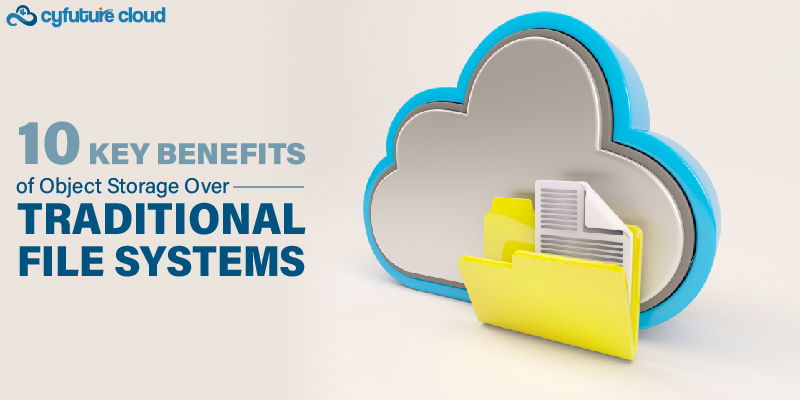Table of Contents
Do You Know–98% of Indian enterprises using public cloud choose a multi-cloud strategy– this staggering statistic highlights the growing importance of a multi-cloud strategy for businesses in India.
A multi-cloud strategy is defined as the use of multiple public cloud providers to host an organization’s applications, data, and services. This strategy enables businesses to distribute workloads across multiple cloud providers, improving the resilience, reliability, and security of their cloud infrastructure.
Cloud computing has become an essential part of business operations, providing flexibility, scalability, and cost-effectiveness. The India public cloud market by organization size is expected to grow by 29.4% in 2022, with a market size of $7.4 billion. The adoption of cloud services is being driven by the increasing demand for digital transformation, data analytics, and the need for businesses to be agile and responsive to market changes.
In India, the prevalence of multi-cloud strategy has been steadily increasing. According to a survey by IDC, 98% of Indian enterprises using the public cloud have adopted a multi-cloud strategy. This trend is being driven by the need for businesses to leverage the strengths of multiple cloud providers and to avoid vendor lock-in. Additionally, the adoption of a multi-cloud strategy allows businesses to take advantage of the unique offerings of each cloud provider, such as specialized services and regional data centers.
In conclusion, a multi-cloud strategy has become an integral part of cloud adoption for businesses in India. With the increasing demand for cloud services, businesses are leveraging the strengths of multiple cloud providers to improve their cloud infrastructure’s resilience, reliability, and security.
To gain more insights into multi-cloud management, enterprise multicloud storage and its benefits–scroll down!
The Advantages of Multicloud Strategy
“Multicloud strategy can provide a range of benefits to businesses, including improved flexibility, security, and cost optimization” – this statement summarizes the advantages of a multicloud strategy for businesses. Let’s take a closer look at each advantage.
Improved Flexibility and Agility
One of the key advantages of a multicloud strategy is improved flexibility and agility. By using multiple cloud providers, businesses can distribute their workloads across different providers to optimize their infrastructure’s performance. This enables businesses to respond quickly to changing market conditions, scale up or down as required, and avoid any single point of failure.
Increased Security
Another advantage of a multicloud strategy is increased security. By distributing workloads across multiple cloud providers, businesses can reduce the risk of a security breach. In case one provider is compromised, the other providers will remain unaffected. Additionally, different cloud providers may have unique security features and certifications, which can further enhance a business’s overall security posture.
Avoiding Vendor Lock-In
Multicloud strategy can help businesses avoid vendor lock-in. If a business relies on a single cloud provider, it may be challenging to switch to another provider in the future due to various factors such as technical incompatibilities, contractual obligations, and vendor pricing models. By using multiple cloud providers, businesses can avoid being tied to a single vendor and maintain the flexibility to switch providers as needed.
Cost Optimization
Multicloud strategy can also help businesses optimize their costs. By using multiple cloud providers, businesses can take advantage of the different pricing models and services offered by each provider. This enables businesses to reduce their overall cloud spend by selecting the most cost-effective provider for each workload. Additionally, multicloud management tools can help businesses monitor their cloud usage and identify areas for cost optimization.
Thus, a multicloud strategy offers a range of advantages for businesses, including improved flexibility and agility, increased security, avoiding vendor lock-in, and cost optimization. To reap the benefits of multicloud strategy, businesses should work with a trusted cloud management provider and develop a robust multicloud management strategy.
Challenges in Implementing a Multicloud Strategy
“Implementing a multicloud strategy can be challenging for businesses due to various factors such as complexity, integration issues, management and monitoring, and talent and skill gap” – this statement summarizes the challenges businesses may face when implementing a multicloud strategy. Let’s explore each challenge in more detail.
Complexity
A multicloud strategy can add complexity to a business’s cloud infrastructure. Managing multiple cloud providers, applications, and services can be challenging, especially when each provider has its own set of tools, APIs, and security protocols. This complexity can result in increased costs and a higher risk of errors and downtime.
According to a survey by 451 Research, 60% of respondents cited complexity as a significant challenge in implementing a multicloud strategy. To overcome this challenge, businesses should consider using multicloud management tools that provide a unified view of their cloud infrastructure and enable them to automate and streamline their operations.
Integration Issues
Another challenge in implementing a multicloud strategy is integration issues. Integrating different cloud providers’ services and applications can be complex and time-consuming, especially when dealing with different APIs and data formats. Integration issues can result in reduced performance, errors, and data inconsistencies.
According to a survey by IDG, 48% of respondents cited integration issues as a significant challenge in implementing a multicloud strategy. To overcome this challenge, businesses should work with a cloud management provider that has expertise in integrating different cloud providers and can provide solutions that address their unique integration needs.
Management and Monitoring
Effective management and monitoring of a multicloud environment can be challenging. Businesses need to have a unified view of their cloud infrastructure to monitor performance, ensure compliance, and detect security threats. However, managing and monitoring multiple cloud providers can be time-consuming and require specialized expertise.
According to a survey by Flexera, 77% of respondents cited management and monitoring as a significant challenge in implementing a multicloud strategy. To overcome this challenge, businesses should use multicloud management tools that provide a centralized dashboard for monitoring and managing their cloud infrastructure. Additionally, businesses should consider working with a cloud management provider that can provide expertise in managing and monitoring a multicloud environment.
Talent and Skill Gap
Finally, implementing a multicloud strategy can be challenging due to the talent and skill gap. Managing a multicloud environment requires specialized expertise in different cloud providers, tools, and technologies. However, finding talent with the necessary skills and experience can be challenging, resulting in a talent and skill gap.
According to a survey by IDG, 37% of respondents cited talent and skill gap as a significant challenge in implementing a multicloud strategy. To overcome this challenge, businesses should invest in training and upskilling their existing workforce and consider partnering with a cloud management provider that can provide specialized expertise and resources.
Thus, implementing a multicloud strategy can be challenging due to factors such as complexity, integration issues, management and monitoring, and talent and skill gap. However, businesses can overcome these challenges by using multicloud management tools, working with a cloud management provider, investing in training and upskilling, and leveraging the expertise of their workforce.
Key Considerations for a Successful Multicloud Strategy
A successful multicloud strategy requires careful planning and execution. In this section, we will explore the key considerations that businesses should keep in mind when implementing a multicloud strategy.
Clearly Defined Objectives
One of the critical considerations for a successful multicloud strategy is having clearly defined objectives. Businesses should have a clear understanding of why they want to adopt a multicloud strategy and what they hope to achieve. This understanding will help them make informed decisions about which cloud providers to use and how to optimize their cloud infrastructure.
According to a survey by Flexera, 44% of respondents cited the lack of clear objectives as a significant challenge in implementing a multicloud strategy. To overcome this challenge, businesses should define their objectives early in the planning process and communicate them effectively to all stakeholders.
Evaluation of Cloud Service Providers
Choosing the right cloud providers is crucial for the success of a multicloud strategy. Businesses should evaluate cloud providers based on their ability to meet their requirements, such as performance, security, scalability, and cost-effectiveness. Additionally, businesses should consider the providers’ compatibility with their existing infrastructure and applications.
According to a survey by IDG, 52% of respondents cited the selection of cloud providers as a significant challenge in implementing a multicloud strategy. To overcome this challenge, businesses should conduct a thorough evaluation of potential cloud providers and prioritize providers that meet their requirements and provide a high level of compatibility.
Data Governance and Compliance
Another critical consideration for a successful multicloud strategy is data governance and compliance. Businesses should ensure that their multicloud environment complies with relevant regulations and standards, such as GDPR, HIPAA, and PCI DSS. Additionally, businesses should have a robust data governance framework that ensures data integrity, confidentiality, and availability.
According to a survey by IDG, 50% of respondents cited data governance and compliance as a significant challenge in implementing a multicloud strategy. To overcome this challenge, businesses should work with cloud providers that have robust security and compliance frameworks and implement data governance policies and procedures that ensure compliance and data protection.
Infrastructure and Network Optimization
Optimizing infrastructure and network is critical for achieving the desired performance and cost-effectiveness in a multicloud environment. Businesses should ensure that their infrastructure is optimized for each cloud provider and that the network is designed to support the required traffic and workload.
According to a survey by 451 Research, 57% of respondents cited infrastructure and network optimization as a significant challenge in implementing a multicloud strategy. To overcome this challenge, businesses should work with cloud management providers that have expertise in optimizing infrastructure and network for multicloud environments.
Effective Management and Monitoring
Finally, effective management and monitoring are critical for the success of a multicloud strategy. Businesses should have a unified view of their cloud infrastructure and be able to monitor performance, security, and compliance. Additionally, businesses should have a robust incident management framework that enables them to detect and resolve issues quickly.
According to a survey by Flexera, 77% of respondents cited management and monitoring as a significant challenge in implementing a multicloud strategy. To overcome this challenge, businesses should use multicloud management tools that provide a centralized dashboard for monitoring and managing their cloud infrastructure. Additionally, businesses should consider working with a cloud management provider that can provide expertise in managing and monitoring a multicloud environment.
Thus, implementing a successful multicloud strategy requires businesses to keep in mind key considerations such as having clearly defined objectives, evaluating cloud providers, ensuring data governance and compliance, optimizing infrastructure and network, and implementing effective management and monitoring. By prioritizing these considerations and working with the right partners, businesses can achieve their desired outcomes in a multicloud environment.
Case Studies of Indian Enterprises using Multicloud Strategy
In this section, we will explore some case studies of Indian enterprises that have adopted a multicloud strategy. These case studies highlight how Indian enterprises are adopting a multicloud strategy to achieve better flexibility, agility, security, and cost optimization in their cloud environments. By partnering with multiple cloud providers and leveraging their strengths, these enterprises are able to achieve their desired outcomes in a multicloud environment.
HDFC Bank
HDFC Bank, one of India’s largest private sector banks, has adopted a multicloud strategy to enhance its digital capabilities and provide a better customer experience. The bank has partnered with multiple cloud providers, including Amazon Web Services (AWS) and Microsoft Azure, to host its various applications and services.
With a multicloud approach, HDFC Bank can leverage the strengths of different cloud providers to meet its specific needs. For example, the bank uses AWS for its disaster recovery infrastructure and Azure for its virtual desktop infrastructure. This approach has enabled HDFC Bank to achieve better flexibility, scalability, and cost optimization in its cloud environment.
Reliance Industries
Reliance Industries, one of India’s largest conglomerates, has adopted a multicloud strategy to support its digital transformation initiatives. The company has partnered with multiple cloud providers, including AWS, Microsoft Azure, and Google Cloud Platform, to host its various applications and services.
With a multicloud approach, Reliance Industries can avoid vendor lock-in and leverage the strengths of different cloud providers for different use cases. For example, the company uses AWS for its enterprise applications and Azure for its mission-critical applications. This approach has enabled Reliance Industries to achieve better agility, scalability, and cost optimization in its cloud environment.
Flipkart
Flipkart, one of India’s largest e-commerce companies, has adopted a multicloud strategy to support its rapid growth and meet the demands of its customers. The company has partnered with multiple cloud providers, including AWS and Microsoft Azure, to host its various applications and services.
With a multicloud approach, Flipkart can leverage the strengths of different cloud providers to meet its specific needs. For example, the company uses AWS for its compute and storage needs and Azure for its machine learning and analytics workloads. This approach has enabled Flipkart to achieve better performance, scalability, and cost optimization in its cloud environment.
Oyo Rooms
Oyo Rooms, one of India’s largest hospitality companies, has adopted a multicloud strategy to enhance its digital capabilities and provide a better customer experience. The company has partnered with multiple cloud providers, including AWS and Google Cloud Platform, to host its various applications and services.
With a multicloud approach, Oyo Rooms can leverage the strengths of different cloud providers for different use cases. For example, the company uses AWS for its compute and storage needs and Google Cloud Platform for its machine learning and data analytics workloads. This approach has enabled Oyo Rooms to achieve better flexibility, scalability, and cost optimization in its cloud environment.
Conclusion
Multicloud adoption is on the rise in Indian enterprises, and it is expected to continue growing in the future. As businesses become more dependent on cloud-based services and applications, they will require a more flexible and scalable approach to cloud computing. Multicloud strategy provides businesses with the ability to leverage the strengths of multiple cloud providers, avoid vendor lock-in, and achieve better performance, scalability, and cost optimization in their cloud environments.
However, there are still challenges to be addressed in the adoption of multicloud strategy. The complexity of managing multiple cloud providers, integration issues, and talent and skill gap are some of the major challenges faced by businesses. Additionally, ensuring data governance and compliance across multiple cloud providers can be a daunting task.
In conclusion, while multicloud strategy offers many benefits for businesses, it is important to approach it with a clearly defined objective and evaluate cloud service providers carefully. Businesses should also prioritize effective management and monitoring to ensure optimal performance and avoid any potential security risks. With the right approach, multicloud strategy can be a valuable tool for businesses to achieve their goals in a cloud-based environment.
Recent Post
Send this to a friend

 Server
Colocation
Server
Colocation CDN
Network
CDN
Network Linux
Cloud Hosting
Linux
Cloud Hosting Kubernetes
Kubernetes Pricing
Calculator
Pricing
Calculator
 Power
Power
 Utilities
Utilities VMware
Private Cloud
VMware
Private Cloud VMware
on AWS
VMware
on AWS VMware
on Azure
VMware
on Azure Service
Level Agreement
Service
Level Agreement 



















